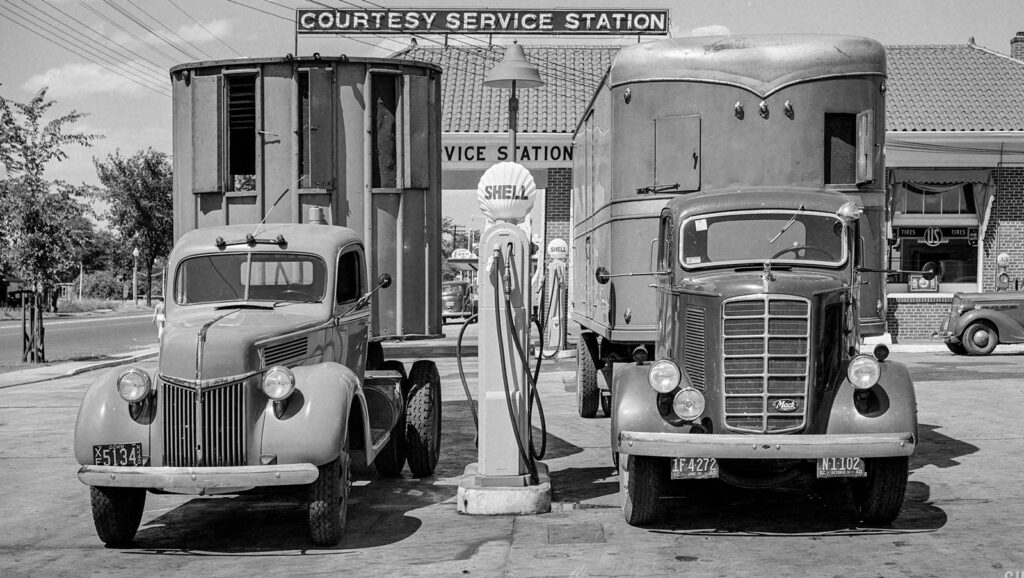The History of Trucking in America: From Early Days to Modern Era
The story of trucking in America is a tale of innovation, determination, and progress. From its humble beginnings to its pivotal role in today’s economy, the trucking industry has undergone remarkable transformations. Let’s delve into the evolution of this vital industry and highlight some of the significant milestones that have shaped its journey.
The Early Days: 1900s to 1920s
The roots of the American trucking industry trace back to the early 20th century. The invention of the internal combustion engine in the late 1800s set the stage for motorized transportation. In 1904, the first gasoline-powered truck was introduced by the Winton Motor Carriage Company. These early trucks were simple, with solid rubber tires and limited carrying capacity, but they marked the beginning of a new era.
As the 1910s rolled in, World War I spurred advancements in truck technology and infrastructure. The war effort highlighted the need for efficient transport of goods and materials, leading to increased investment in road construction and truck development. By the 1920s, trucks began to replace horse-drawn wagons for local deliveries, paving the way for a more dynamic logistics network.
The Growth Era: 1930s to 1950s
The Great Depression of the 1930s posed significant challenges, but the trucking industry persevered. The passage of the Federal-Aid Highway Act in 1921 had already initiated the construction of a national highway system, which became a critical asset during this period. As the economy began to recover, the industry saw an uptick in demand for long-distance freight transport.
The 1930s also witnessed the introduction of diesel engines, which provided greater efficiency and power compared to gasoline engines. This technological advancement, coupled with the increasing network of paved roads, propelled the trucking industry forward.
World War II further accelerated the growth of trucking. The war effort required efficient transportation of military supplies, leading to innovations in truck design and logistics. After the war, the surplus of military trucks and the booming post-war economy fueled the expansion of the trucking industry.
The Interstate Revolution: 1950s to 1970s
The 1950s marked a transformative period with the enactment of the Federal-Aid Highway Act of 1956. This legislation led to the creation of the Interstate Highway System, an extensive network of high-speed roads that revolutionized freight transport. Trucks could now move goods across the country more efficiently and reliably than ever before.
During this era, the trucking industry saw significant regulatory changes as well. The Motor Carrier Act of 1935 had placed the industry under the oversight of the Interstate Commerce Commission (ICC), which regulated rates and routes. However, the industry continued to grow, and by the 1970s, trucking had become the dominant mode of freight transportation in America.
Deregulation and Modernization: 1980s to Present
The 1980s brought about a new wave of change with the Motor Carrier Act of 1980, which deregulated the trucking industry. This landmark legislation reduced restrictions on entry and pricing, fostering increased competition and innovation. As a result, trucking companies could operate more freely, leading to improved services and lower costs for consumers.
Technological advancements in the late 20th and early 21st centuries further transformed the industry. The introduction of GPS technology, electronic logging devices (ELDs), and telematics enhanced route planning, safety, and efficiency. These innovations, combined with the rise of e-commerce, have cemented trucking’s role as the backbone of the American economy.
Significant Milestones and Challenges
Throughout its history, the trucking industry has faced numerous challenges and achieved significant milestones. The introduction of refrigerated trucks in the 1920s revolutionized the transportation of perishable goods. The development of containerization in the 1950s facilitated seamless intermodal transport, connecting trucks with ships and trains.
The industry has also grappled with issues such as driver shortages, regulatory changes, and environmental concerns. Today, the focus on sustainability and the adoption of electric and autonomous trucks represent the next frontier in the evolution of trucking.
The history of trucking in America is a testament to the industry’s resilience and adaptability. From its early days of rudimentary vehicles and unpaved roads to the modern era of advanced technology and expansive highways, trucking has continually evolved to meet the demands of a changing world. As we look to the future, the trucking industry will undoubtedly continue to innovate and drive the American economy forward.
Safe travels, and here’s to the road ahead!

Seashore transportation is a transportation staple in La Porte Texas.



